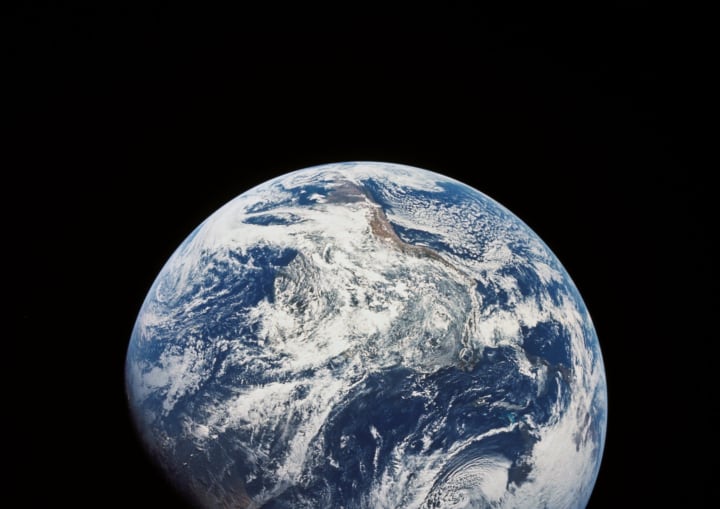The Earth's Atmosphere: A Closer Look at Our Protective Shield
The Earth's atmosphere is composed of several gases, with nitrogen and oxygen being the most abundant.

The Earth's Atmosphere
The Earth's atmosphere is the blanket of gases that surrounds our planet, extending from the surface up to thousands of kilometers above us. It's a complex system of gases, particles, and energy that plays a critical role in sustaining life on Earth. From shielding us from harmful solar radiation to regulating our climate, the atmosphere is our planet's protective shield. In this article, we will take a closer look at the Earth's atmosphere and its various layers, components, and functions.
Layers of the Atmosphere
The Earth's atmosphere is divided into several layers based on the temperature and density of the air. The lowest layer, closest to the surface, is called the troposphere. It's where weather occurs, and most of the Earth's air and water vapor are found. The next layer is the stratosphere, where the ozone layer is located. The ozone layer absorbs harmful ultraviolet (UV) radiation from the sun, protecting life on Earth from skin cancer, cataracts, and other harmful effects of UV radiation.
Above the stratosphere is the mesosphere, which is much colder and less dense than the layers below it. It's where meteors burn up as they enter the Earth's atmosphere. Finally, the outermost layer of the atmosphere is the thermosphere, which extends to the edge of space. The thermosphere is where the auroras occur and where space shuttles and another spacecraft orbit.

The Earth's atmosphere is divided into five layers, each with its own characteristics and functions. From the bottom up, these layers are:
Troposphere: The troposphere is the lowest layer of the atmosphere, extending from the Earth's surface up to around 7-20 km (4-12 miles) depending on the latitude. This is where most of our weather occurs, including clouds, precipitation, and storms. The temperature in the troposphere decreases with altitude, and this layer contains almost all of the Earth's air, water vapor, and dust particles.
Stratosphere: Above the troposphere is the stratosphere, which extends from around 20-50 km (12-31 miles) above the Earth's surface. The stratosphere is where you'll find the ozone layer, which absorbs harmful ultraviolet radiation from the sun. The temperature in the stratosphere increases with altitude due to the absorption of UV radiation by ozone molecules.
Mesosphere: The mesosphere extends from around 50-85 km (31-53 miles) above the Earth's surface. This layer is much colder than the layers below it, with temperatures dropping as low as -90°C (-130°F) at its upper boundary. The mesosphere is also where meteors burn up as they enter the Earth's atmosphere.
Thermosphere: The thermosphere is above the mesosphere, extending from around 85-600 km (53-372 miles) above the Earth's surface. The temperature in the thermosphere can reach as high as 2,500°C (4,500°F) due to the absorption of high-energy solar radiation. This layer is also where the auroras occur and where satellites and other spacecraft orbits.
Exosphere: The exosphere is the outermost layer of the Earth's atmosphere, extending from the top of the thermosphere to the edge of space. This layer is very thin, and the density of the air is extremely low. The exosphere merges with the vacuum of space and is where the Earth's atmosphere meets the solar wind.

Each layer of the Earth's atmosphere has its own unique characteristics and functions, and understanding these layers is essential for studying our planet's climate and weather patterns.
Components of the Atmosphere
The Earth's atmosphere is composed of several gases, with nitrogen and oxygen being the most abundant. Nitrogen makes up about 78% of the atmosphere, while oxygen makes up about 21%. The remaining 1% of the atmosphere is made up of various other gases, such as argon, carbon dioxide, and neon.
In addition to gases, the atmosphere also contains particles such as dust, pollen, and sea salt. These particles play a role in cloud formation and precipitation. The atmosphere also contains water vapor, which is critical for the water cycle and weather patterns.
Functions of the Atmosphere
The Earth's atmosphere performs several critical functions that are essential for life on Earth. Perhaps the most important function is the atmosphere's ability to shield us from harmful solar radiation. The ozone layer in the stratosphere absorbs most of the sun's harmful UV radiation, protecting us from skin cancer, cataracts, and other harmful effects of UV radiation.

The atmosphere also regulates the Earth's climate. It does this by absorbing and trapping heat from the sun, which keeps the Earth's surface warm enough to support life. Without the atmosphere's greenhouse effect, the Earth's surface would be much colder and unable to support most forms of life.
Another critical function of the atmosphere is its role in the water cycle. Water vapor in the atmosphere evaporates from oceans, lakes, and other bodies of water and rises into the atmosphere. As the water vapor cools, it condenses into clouds and eventually falls to the Earth's surface as precipitation. This process is essential for providing fresh water to plants and animals and supporting life on Earth.
Protecting the Atmosphere
Despite its critical role in sustaining life on Earth, the atmosphere is under threat from human activities such as burning fossil fuels, deforestation, and industrial processes. These activities release greenhouse gases into the atmosphere, such as carbon dioxide and methane, which trap heat and contribute to global warming and climate change.

To protect the atmosphere, we need to reduce our carbon footprint by using clean energy sources, such as solar and wind power, and reducing our consumption of fossil fuels. We can also plant more trees and support reforestation efforts, which can help absorb carbon dioxide from the atmosphere. Additionally, we can reduce our use of single-use plastics and support initiatives to reduce pollution, which can harm the atmosphere and the health of living organisms.
Conclusion
In conclusion, the Earth's atmosphere is a complex and essential system that plays a vital role in sustaining life on our planet. From protecting us from harmful solar radiation to regulating our climate and supporting the water cycle, the atmosphere is our protective shield. However, human activities are putting the atmosphere under threat, and we need to take steps to reduce our carbon footprint and protect this critical system for future generations. By understanding the importance of the atmosphere and taking action to protect it, we can help ensure a sustainable future for our planet and all its inhabitants.
About the Creator
Gokila
She is an astrophile, introvert,
loves to read books all day long,
addicts in healthy lifestyle
and having curiosity to know about new things.
Life Is As Beautiful As You Make It. Contentment Is The Key To Happiness. Peace Be Upon The Saviour.
Enjoyed the story? Support the Creator.
Subscribe for free to receive all their stories in your feed. You could also pledge your support or give them a one-off tip, letting them know you appreciate their work.






Comments
There are no comments for this story
Be the first to respond and start the conversation.